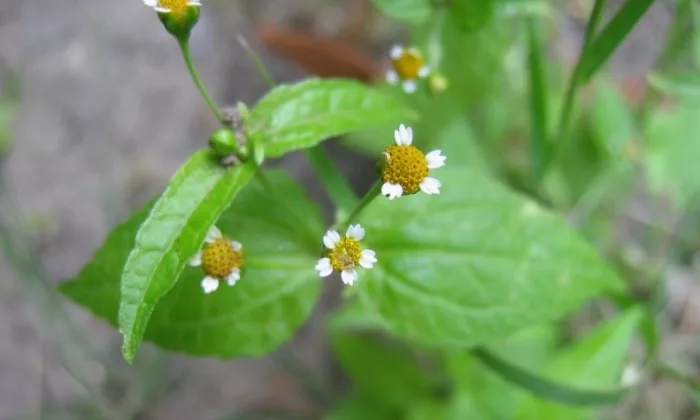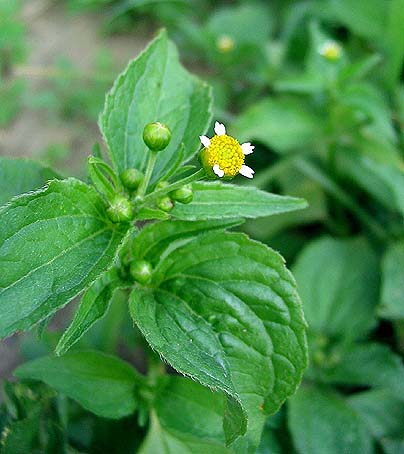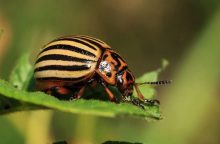Shaggy soldier (Galinsoga parviflora). Weeds that deserve our attention and quick elimination

Which weeds is probably the easiest to pull out of the ground? Probably the so-called shaggy soldier, because it has quite shallow root system. Strong frosts would kill it too, but if these weeds with small leaves spread in your garden, you have a problem. Galinsoga parviflora propagates with lots of seeds. Just for your information, one single plant can have up to 300,000 seeds! So imagine the potential! Other plants such as horsetail or fowl propagate through rhizomes – and that is a big difference!
Shaggy soldier under a microscope
In Central Europe, we most often encounter the above-mentioned Galinsoga parviflora but you will certainly see plenty of Galinsoga quadriradiata. It is found often in loamy soils. It is typical for more robust appearance and for a hairy stem. The seeds of both species are spread by wind and often by wild animals. Attaching seeds to animal fur is nothing special. In terms of the growth period, Galisonga parviflora is more of a late species and blooms from May until the first frosts hit. It prefers soils with large amounts of nitrogen.
Why is it necessary to destroy galisonga parviflora and other varieties?
There are several reasons:
- it takes the necessary nutrients and moisture from the soil,
- it hosts mites, which then attack ornamental plants, cucumbers, etc.
- It will grow even after you have loosened the soil, and when you are ready to sow other seeds,
- It germinates through achenes for 2 or more years.
Photo: Pixabay
How to fight it?
First of all you need to be patient and keep physically removing the weedsThat is if you are not planning on using herbicides. After you have finished your harvest, leave your veggie patches and flower beds fallow and use green manure. The question is what to do with the weeds. Well, if you have animals or livestock you may use it to feed them. They will love it. You may also put in compost, but use nitrogen lime to kill it.
Photo: Pixabay

Gardening is my hobby, I have a lot of experience and I am happy to share it.









0 comments